Imagine this: You’re setting up your login information for your email, or maybe it’s your Cloud database account. Upon entering your password, the program prompts you to include a capitalized letter, number and possibly a symbol in your password. You wonder, “Is this really necessary? Who’s going to be THAT determined to break into my accounts?” Well to answer that question: hackers.
Hackers are going to great lengths to recover your account login credentials. And as hackers develop more ways to steal your identity, you must become more vigilant in securing your accounts.
Phishing scams are one of the most prominent ways to steal your information. This type of scam comes in the form of a fraudulent email that appears to come from a credible website or company. The email requests that you follow the link and enter your private information, such as credit card numbers, passwords and other sensitive information into a form of some sort. Many times these emails will appear urgent and prompt the reader into making a quick decision to enter their information.
A second way to crack your passwords is a crude, but effective way: educated, clever guesses. Did you know that two of the most common passwords are still “password” and “123456”? But even pet or family names that you think will be safer can be obtained just by perusing your Facebook or other social media accounts.
In reality, many hackers have a database of popular passwords that they can use to try and login to your accounts. When that fails, they can use powerful algorithms that can find 8 billion password combinations in mere seconds.
Re-thinking how strong your password is yet?
Hackers have almost endless ways to crack your password. Even if it has five numbers, six punctuation marks and your great-grandmother’s name in it. But if they crack one of your passwords and all your other account passwords have the same password then your whole internet security has now been compromised.
So what can you do?
Well here are four tips to create a safer password:
- Change your password for every account you create.
Yes, it may be annoying to remember all your passwords, but if you keep a written record of them somewhere safe (that is not on your computer), that takes a lot of the hassle out of having to remember all of them.
- Make it relatively lengthy.
Usually eight characters or more suffices.
- Have a complex password that includes numbers, punctuation marks, and non-letter symbols.
This makes it much harder to crack than a simple “Doglover12.”
- Use words or names that have nothing to do with your personal life, then try to convert that word in symbols.
Example: Sk8te1*!45
If your account becomes comprised, take immediate action to re-set the password. Be safe when setting up login credentials. Even if you think it’s a hassle to follow the tips above, remember: nothing is a hassle when it comes to your security.
Sign up for our upcoming FREE seminar on “6 Critical Security Protections Every Business Must Have in Place to Avoid Cyber Attacks, Data Breach Lawsuits, Bank Fraud and Compliance Penalties.” Seminar is Oct. 22, 2015, and space is limited.











